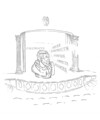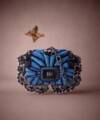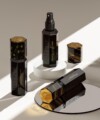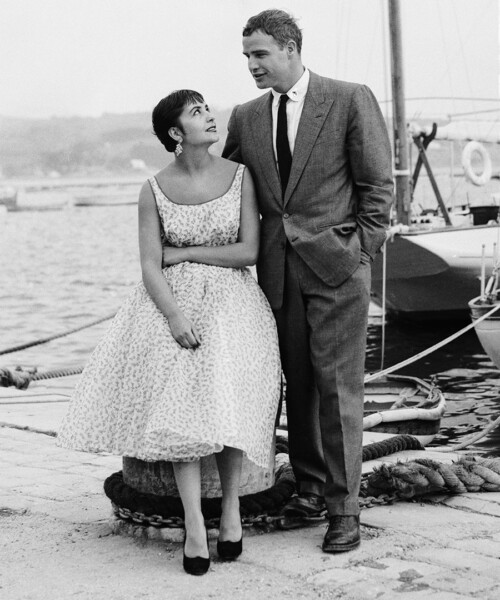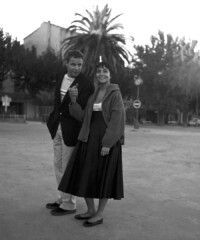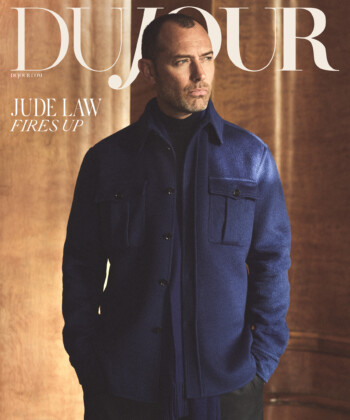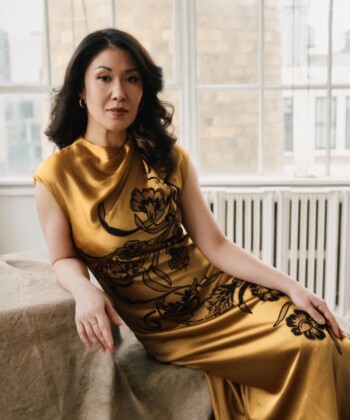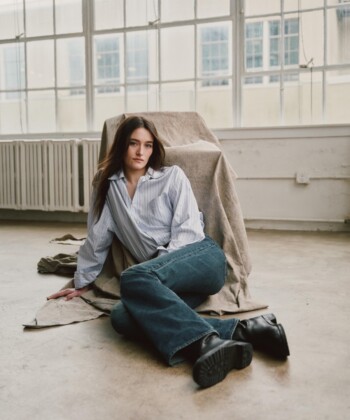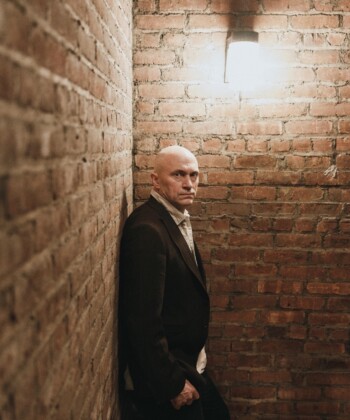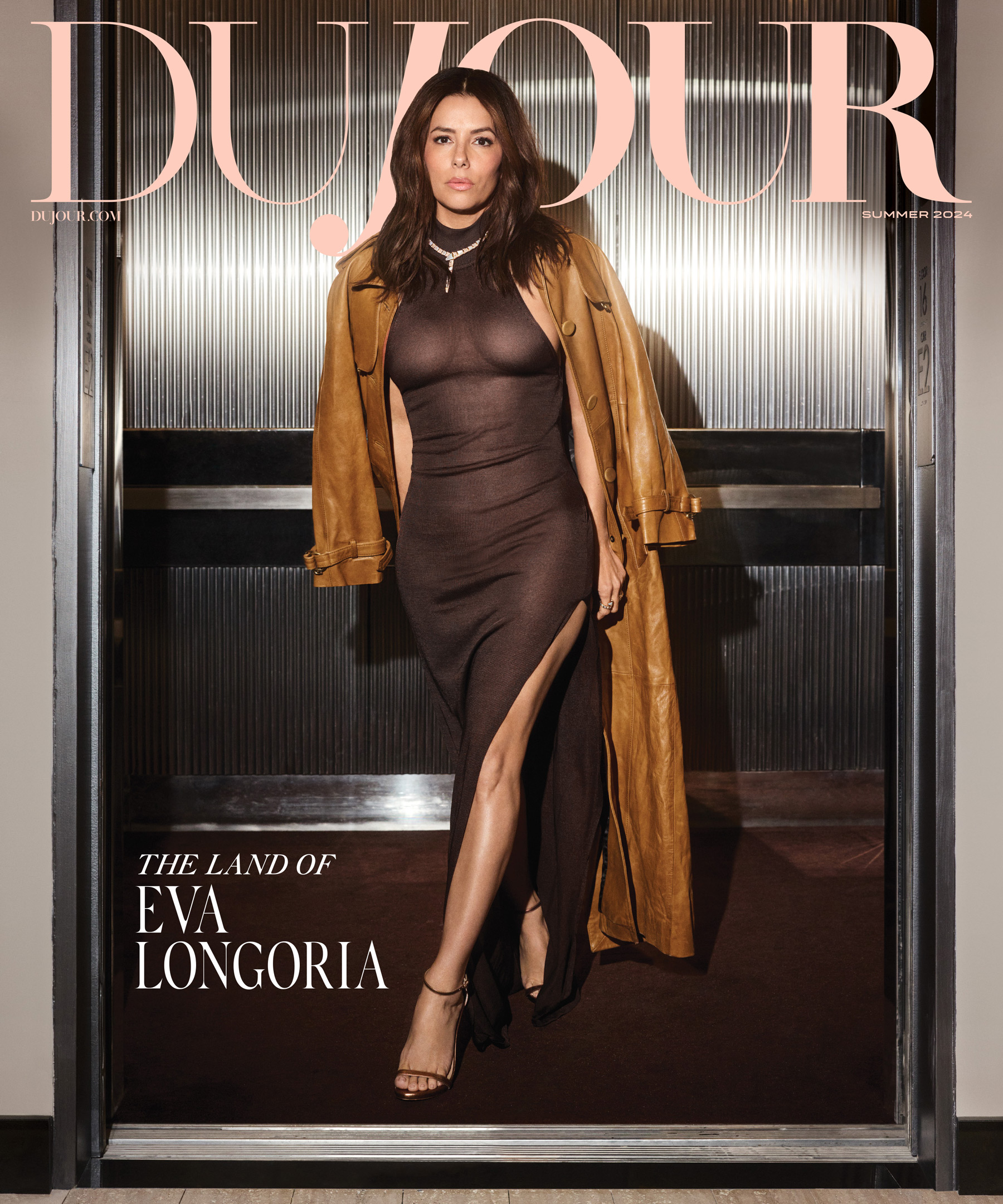It’s a warm October morning in Bandol, a little fishing village on the palm-fringed coast of the French Riviera. Marlon Brando is awake early, taking a long stroll along the harbor, puffing moodily on a cigarette. It’s 1954 and the 30-year-old actor, whose dazzling performance in Elia Kazan’s On the Waterfront has catapulted him to demigod status, is taking a weeklong respite from Hollywood. Here in Bandol, nestled between Marseille and Toulon, few of the sun-wizened fishermen unloading their catch of the day are likely to give him a second glance. He ducks into a nautical store and picks out some striped sailor jerseys—his and hers—and throws in a pair of espadrilles. Then he heads back to the modest apartment where his 19-year-old fiancée, Josanne Mariani, is staying with her parents.
About 48 hours later, the couple’s engagement is officially announced in the local newspaper, and the quiet fishing village is sleepy no more.
“Once photographers got wind of the fact that Marlon was in town they followed us everywhere,” recalls Mariani with a half-smile. “One of my friends lent us a dinghy, and I can still see Marlon rowing frantically trying to lose them.”
We are sitting in the shade of an olive grove in a vineyard perched above Bandol. I had originally come to town to research an article I was writing about the secret Riviera, east of Marseille. While flipping through a Bandol tourist brochure, a photo of Marlon Brando caught my eye; he was decked out in a navy blazer and chinos, walking down the portside quay. As a cinema buff, I was reasonably certain Brando had never shot a scene in the South of France and started asking around. Locals were clueless for the most part, but then a woman at the tourist office volunteered, “I think maybe he had a fling with a girl from Bandol.” A search led me to Mariani, who has been living peacefully in her hometown for the nearly 60 years.
It’s a hot summer day and the thrumming cicadas are almost deafening. At 81, Mariani, dressed in white jeans and a turquoise cotton tunic, has the energetic step of a much younger woman. “I was a yoga teacher, and I swim every day,” she shrugs, as we page through the scrapbook of photos that document her unlikely three-year romance with Brando.
When the news of their engagement broke, the press was quick to label Brando’s mysterious young French girl “the fisherman’s daughter.” Mariani amends, “He was actually my stepfather. I was born in Marseille, and we left after my father died. When we moved to Bandol my mother remarried.” A mere detail, perhaps, but one of many uncorrected errors in the public’s hazy memory of Mariani, who has rarely granted interviews.
“I tend to be a private person. I was also incredibly naïve about the press,” she says. In 1960, five years after she and Brando had broken off their engagement, Mariani spoke to a pair of Parisian journalists from a now-defunct magazine, Confidences. They were friends of friends, she says, and corralled her into telling them her story.
But when the article was published, she barely recognized her own words.“I was flabbergasted,” she says. “They made up all kinds of absurd, dramatic embellishments based on what I told them, and they signed my name as the author.” Then, to her dismay, a translated version of the piece was picked up by the Chicago Tribune. And while it’s true the better part of a lifetime has passed since that youthful heartbreak, it’s still impossible to reconcile the melodramatic voice found in the 1960 article with the self-contained woman sitting across from me. Now, nearly six decades later, Mariani is ready to tell her version of the story.
The uncharted course that led Mariani to Brando began when, at 16, she began posing as a nude model for Moïse Kisling, a Polish-born French painter hailed as a great artist by his friends Modigliani, Cocteau and Picasso. At the height of his career, Kisling left Paris to settle in tiny port town near Bandol, and after seeing Mariani at the seafront one day, he sent his wife to ask her parents’ permission for her to sit for him.
Then chance intervened. While vacationing on the Riviera, a friend of the artist, New York psychiatrist Dr. Daniel Schneider, stopped by Kisling’s studio to buy some paintings. When Schneider spotted Mariani, he was evidently struck by her wide-eyed gamine beauty and impulsively decided to hire her as an au pair for his children. “He told Kisling, ‘This girl needs a proper education, and she’s not going to get it here!’” She smiles wryly, then adds, “Men have always decided for me without asking what I thought.”
Finding herself suddenly transported to New York’s Upper East Side, Mariani juggled her minimal duties with loftier pursuits. She pored through the books in the family library and was sent off to study with Stella Adler, the pioneering acting coach.
One night in early December 1953, Adler threw a cocktail party for current students and invited some of her prized alumni. Mariani remembers standing in a corner feeling a bit lost. “Marlon suddenly came up to me and asked me to dance. I recognized him, but knew nothing about him—including his previous love affairs. I’ve never been inclined to ask questions.”
From there, it all happened very fast. “He called me a few days later and we started going out—to the theater, to Chinese restaurants, to Harlem to hear Louis Armstrong. About two weeks after we’d met, Marlon asked me to take him to see Dr. Schneider.” Once again, Mariani says, she sat quietly in a corner while two men decided where she was going next.
Schneider informed her that Brando would be taking care of her from then on. “Later, Marlon would tell me, ‘I’m eleven years older than you, I should act more responsible,’” she says.
Free of her au pair duties, Mariani moved into Brando’s apartment on 57th Street, above Carnegie Hall. Thanks to Schneider’s connections, sheʼd landed a small role in a production of Cyrano de Bergérac with José Ferrer. “Marlon would pick me up after the show and we’d go out for dinner. I was never expected to cook—plus, I had never lived with a man before and had no idea what
to do.”
Her first night with Brando is rapturously recounted in the Chicago Tribune piece: “He threw a scarf over a lighted lamp bulb, then took my hand in his and anointed our two hands with oil, [then] with the warm scarf, bound our hands together [and gave me] a strange refined kiss.” Mariani snorts with laughter. “What a bunch of baloney! It is true that he put a scarf over the lamp to dim the lights, like everyone did in those days.”
When Mariani met Brando, he was in post-production of On the Waterfront and reading scripts. The Carnegie Hall apartment, she notes, was nothing fancy: a sofa, partly chewed by Brando’s pet raccoon (“He had to give it away, but he loved animals”), a little workout room with barbells and another corner for his bongos. On the bedroom dresser sat a brown bottle of Brando’s then-favorite cologne, Bay Rum, from the C.O. Bigelow pharmacy. “He was already into exotic islands,” she laughs.
But life with Brando was unpredictable. He could disappear for two days, but Mariani says that she took it in stride, no questions asked. Among the happiest memories, she recalls, were their trips to Coney Island. “It was hilarious, Marlon would call up his old friend and makeup man, Phil Rhodes, who would disguise him beyond recognition—a fake nose, a wig, glasses, a mustache. We were like kids—the merry-go-round, the Ferris wheel, the shooting gallery…”
Fast forward to Bandol, October 1954. Mariani had left New York to visit her parents for a few months. “Marlon was in Paris and decided to surprise me. He took the train and turned up at my parents’ place one morning,” she says. “When we were alone in my room, he slipped a ring on my finger—a beautiful silver Native American ring with a turquoise oval stone—and said, ‘We’re engaged.’ Then he kissed me. He wasn’t the kind of person who would get down on his knee and propose. That just wasn’t his style.”
There are a number of instances in the Tribune account that recall shocking cruelty on Brando’s part, but perhaps none more than what’s described as having happened just after the press conference announcing their engagement. “When the interviews were over,” the article reads, “Marlon and I were left alone. I turned to him, more thrilled than I could say—to find an utterly changed man beside me. His face was set, his eyes were hard. I felt anger boiling inside him. I can’t remember precisely what he said, the shock was too great. All I know is that he accused me of forcing him into the engagement. The publicity our visit had aroused, he told me, had jolted him into going further than he had intended.”
Mariani flatly denies that Brando ever felt forced into the announcement of their engagement, or that it was some kind of publicity stunt. She says it was an entirely joyous day. “That night, we celebrated at dinner with my stepfather’s freshly caught lobsters.” The fisherman’s daughter had made a fine catch, smirked the press. Unperturbed, Mariani returned to the States that November, and let things take their course.
But when she got there, all her belongings had been moved to Brando’s new home in L.A.’s Laurel Canyon. It was there, during the shoot of Désirée, that the relationship began to show signs of strain. L.A. was a different life, racing around in Brando’s new black Thunderbird convertible and taking in the Hollywood glamour. There was still no date set for the wedding.
On set every day, usually holed up in Brando’s trailer, Mariani now recognized that she was “very naïve” about her fiancé’s relentless womanizing. “I remember watching Marlon and Rita Moreno doing intricate dance steps in the living room. She was a real professional, and I simply thought, ‘How wonderful!’ I’m not jealous by nature. You couldn’t be jealous with Marlon.”
Still, she could see that Brando was becoming a meaner version of himself. After meeting James Dean at a friend’s house (“He was a sensitive, spiritual person, very discreet”), the last thing Mariani expected was Brando’s dismissal of the young actor. “He could have helped Dean, but he just avoided him.”
By September 1955, when Mariani received the 4 A.M. news of Dean’s fatal car crash, she was no longer in Laurel Canyon with Brando, but living alone. His company, Pennebaker Productions, had arranged everything: She was set up temporarily in an apartment on Doheny Drive, then came a house in Coldwater Canyon with a pool. By 1958 she had been moved again, to a less expensive part of town near Sunset Boulevard.
So why the eventual severing? Mariani stiffens visibly and is momentarily silent. “Marlon’s father told him that he would make me unhappy and that he should stop the relationship as soon as possible. So he took his advice and told me, ‘You’re young, you have your whole life ahead of you.’ I knew in my heart that Marlon was a Don Juan.”
Even today, recalling the moment of their breakup is still painful. “We were at the house in Laurel Canyon, sitting on the edge of the bed. He was smoking a cigarette. I asked him, ‘Doesn’t it hurt you?’ He said, ‘This is how much it hurts me,’ and put his lit cigarette on his palm and held it there.”
“And then,” she pauses and starts to smile, “he got up and put a Band-Aid on it. Always such drama!”
Mariani gazes out over the grape vines and blue-gray foothills in the distance. Suitably, a bottle of red Bandol arrives at the table. “He was always so impulsive,” she says. “When I first arrived in Los Angeles, he said, ‘I’m going to take you to see where the real stars are.’ He wouldn’t say where we were going, and we drove all the way to the Mount Wilson Observatory.”
Has she ever asked herself what Brando saw in her?
“No, never, [likely because] I wasn’t an opportunist; I saw him with new eyes,” she says. “But I remember him quoting something Tennessee Williams once said: ‘Nobody sees anybody truly but all through the flaws of their own egos.’ And I’d say that sums up Marlon really well.”








